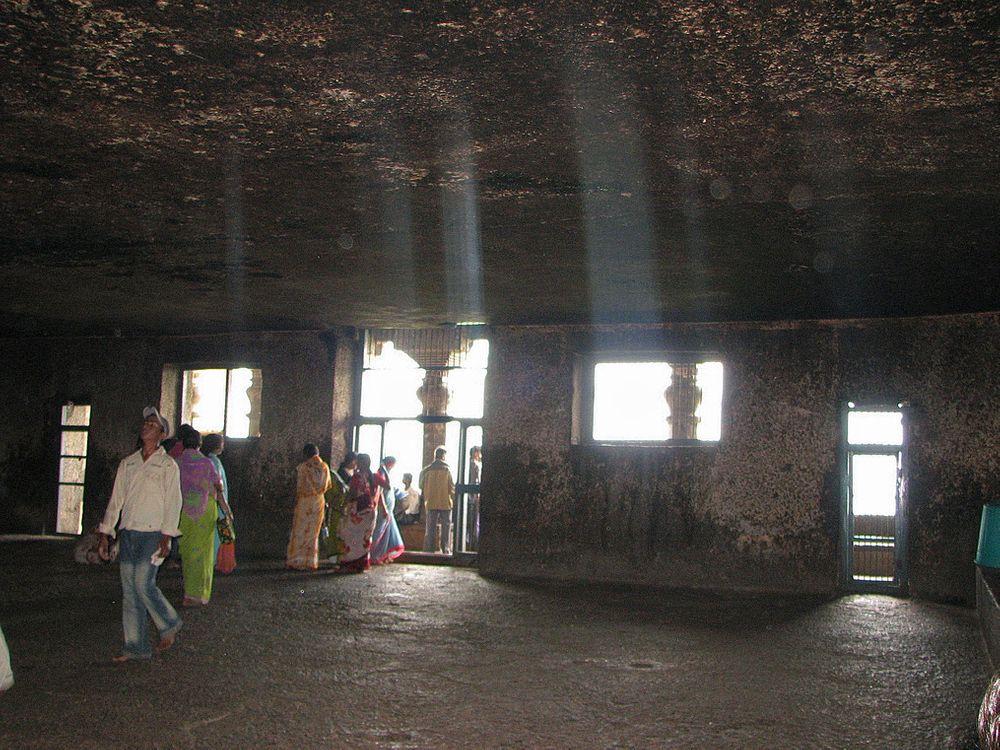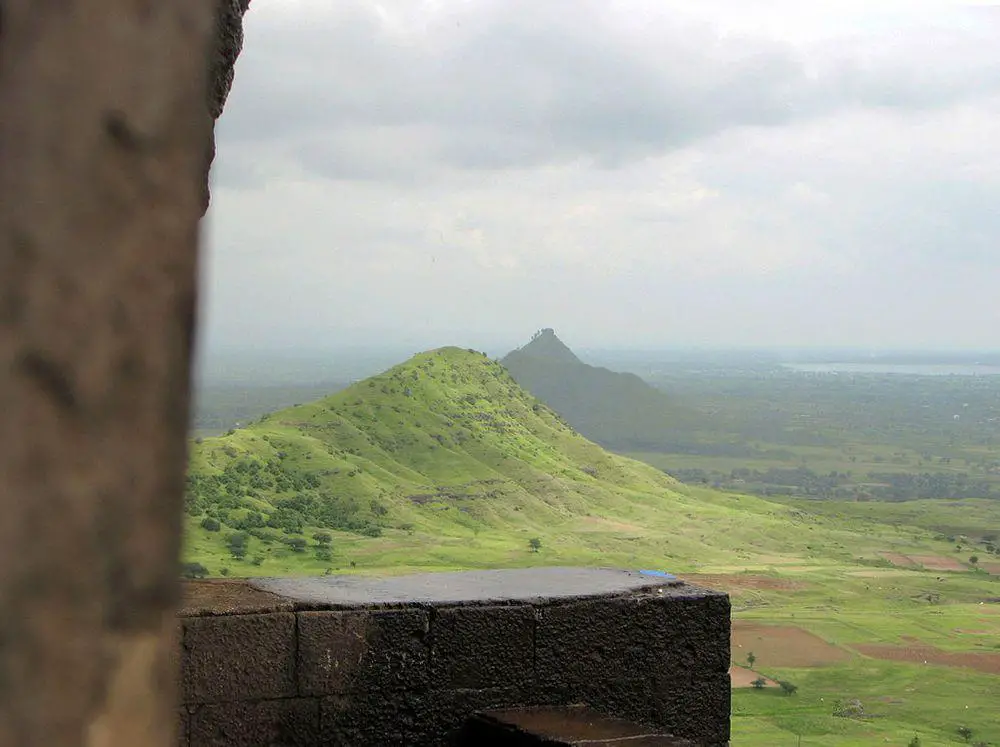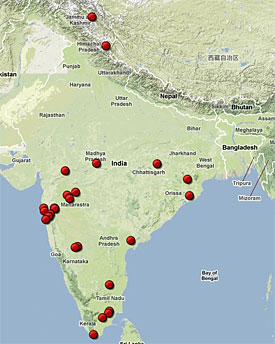World 🢖 Asia 🢖 India 🢖 Maharashtra
Buddhist shrines 🢔 Religious architecture 🢔 Archaeological wonders 🢔 Categories of wonders
Wonder
Lenyadri Caves, Junnar
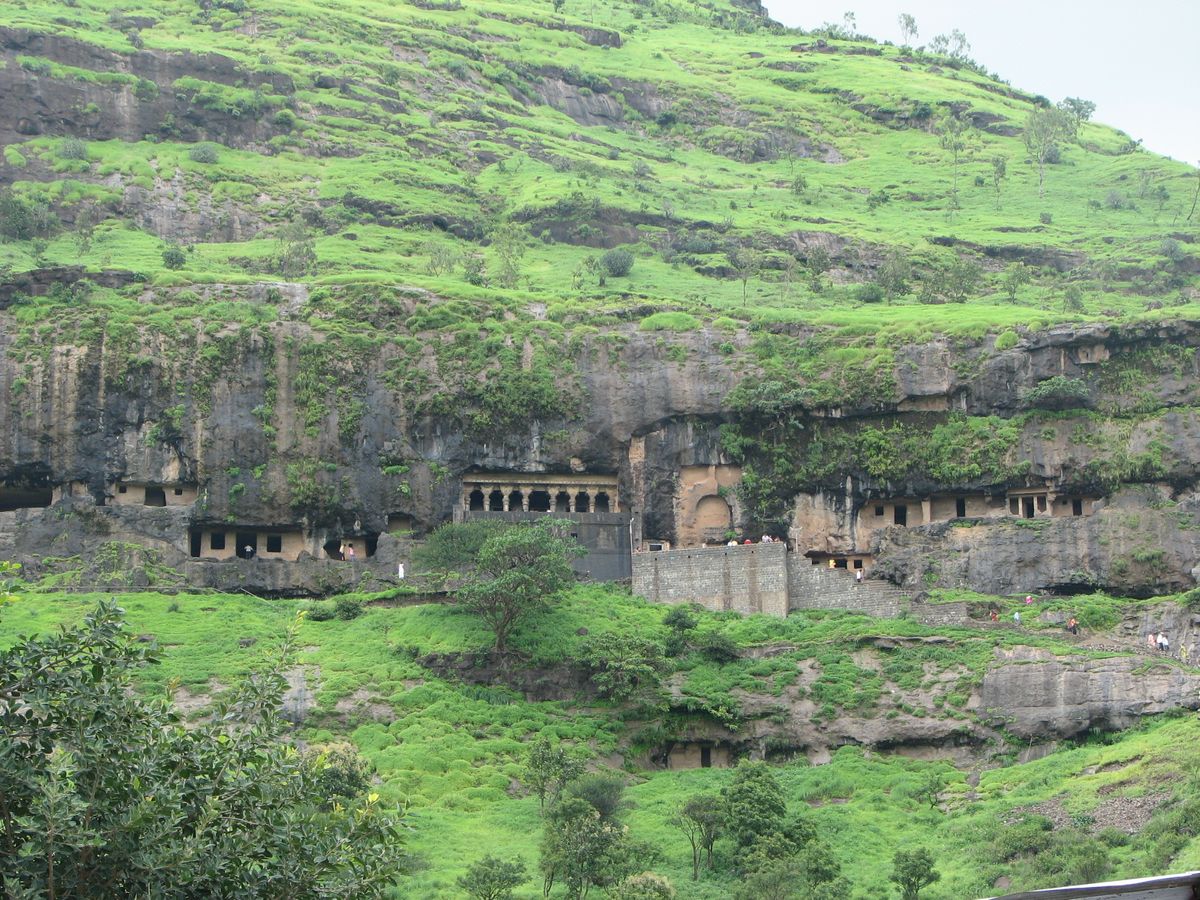
 In short
In short
Area around Junnar contains more than 200 ancient rock-cut temples. The largest and most impressive group is Lenyadri Caves known also as Ganesh Lena. These caves are located to the north from Junnar, on southern hillside of large mountain called Sulaiman Pahar or, after the Ganesha shrine in one of the caves, – Ganesh Pahar. Ancient inscription in one cave calls the hill – Kapichita (Kapichitta).
 44.3%
44.3%
GPS coordinates
Location, address
Name in Marathi
Alternate names
Age
Religion
Map of the site
If you see this after your page is loaded completely, leafletJS files are missing.
 In detail
In detail
40 man-made caves
Word “Lenyadri” could be translated simply as “mountain cave”. This word is compiled from “Lena” (“Cave” in Marathi) and “adri” (“stone”, “resistant” in Sanskrit).
Lenyadri contains nearly 40 rock-cut caves. The best known and most visited is a group of 30 caves located in a compact group and all facing towards the south.
These caves have been created in the 1st – 3rd century AD as a Buddhist monastery. Later one of the Buddhist dwellings was turned into a popular shrine of Hindu god Ganesh.
Caves are reached by stepping 283 stone cut steps arranged in ten flights, built in the 19th century. Visitors of the Ganesh temple see this as a symbol of sensual pleasures which Ganesh had to overcome.
Buddhists created these caves according to the canon of time – Hinayana. Group of 30 caves contains two large shrines – chaitya griha and one small chaitya. Other caves were created as dwellings for monks – viharas. Most viharas consist of the verandah, central hall, and cells arranged around the central hall.
As it is usual for Indian rock-cut caves, the caves in the main group are numbered, in this site from the east to the west.
Hill contains four more rock-cut caves which seem to be older than the caves in the main group. One of these caves is a small chaitya with entrance carved decoration – lotus, geometric patterns. Other caves also contain shrines.
Lenyadri caves have preserved traces of ancient cave paintings and inscriptions.
Nearby there are other groups of caves – Manmod Caves to the south-east from Junnar, Shivneri Caves to the south-west and Tulja Lena to the west.
Description
- Cave 1 has a cistern in front, filled with earth.
- Cave 5 has cistern in front. Seven cells around the central hall. Rear wall of verandah contains inscription with swastika at the end – inscription tells that this cave has been donated by merchants of corn.
- Cave 6 – chaitya griha (main shrine). This was the main Buddhist shrine in this group. One of the earliest examples of Hinayana tradition chatya griha. Consists of pillared verandah and an apsidal hall which by a row of 16 pillars is divided into central nave and side aisles. Main hall is 13.3 m long, 6.7 m wide and 7.6 m high. At the rear there is located stupa – drum with a railing above. Inscription by the donor of cave from the 2nd century AD.
- Cave 7 – largest vihara in this group, largest man-made cave in vicinities of Junnar. Nowadays better known as an important Hindu temple, although initially it was created as the dwelling of Buddhist monks.
Consists of a large central hall with rows of small cells on three sides. Verandah has six pillars and two pilasters. Hall is 17.37 m long, 15.54 m wide and 3.8 m high. In total cave has 20 cells – 7 at each side wall and 6 at the rear wall.
During the conversion to the Hindu shrine, the entrances have been enlarged and there were made sockets to fix the wooden door. Two central cells at the rear wall in unknown time have been transformed into one and here has been arranged Ganesh shrine – with an image of Ganesh. It is one of eight prominent Ashtavinayak shrines in Maharashtra, in general, visited as No.6 during the Ashtavinayaka pilgrimage.
After conversion to the Hindu shrine, this hall was covered with plaster and painting – traces of these paintings are seen up to this day. Back in 1882 whole hall was still plastered with clay and white-washed. Cave was covered with comparatively late paintings (the 19th century?) depicting scenes from Ganesha’s life – childhood, Hallisaka dance, marriage preparations, battle with demons. Other paintings showed other Hindu deities – Vishnu, Krishna, Shiva, and others. - Cave 9 – verandah had four pillars. It has been speculated that the main hall of this vihara was used as a school or study.
- Cave 10 contains traces of paintings on the ceiling.
- Cave 11 also contains traces of paintings on the ceiling.
- Cave 12 – ceiling in the hall contains traces of painting – concentric circles.
- Cave 13 has a cistern in the front. The ceiling in the hall contains traces of paintings.
- Cave 14 – chaitya griha. Pillared verandah. Hall has a flat roof and there are no pillars inside, it is 6.75 m long, 3.93 m wide and 4.16 m high. At the rear end, there is a stupa with a base diameter – 2.6 m. At the back of the verandah, there is an inscription, the calligraphy of writing could be dated to the 2nd century AD.
- Cave 17 consists of three dwellings behind a single verandah. Cell in the middle dwelling contains traces of painting. In front of this cave and near it there are five cisterns. One cistern contains an inscription – “A meritorious gift of a cistern by Saghaka a goldsmith, son of Kudira of Kalyana.” Another cistern contains inscription “A meritorious gift of a cistern by Lachhinika (wife) of Torika the Na daka Nadabalika, wife of Isimulasami.”
- Cave 18 is a dining hall (bhojanamandapa), cistern to the left from verandah.
- Cave 22 contains inscription left by donor.
- Cave 25 is comparatively large cave, not completed due to the bad condition of rock.
- Cave 26 is small chaitya – shrine.
References
- Junnar, Maharashtra Gazetteers Department, accessed on May 30, 2010.
- Lenyadri Group of Caves, Junnar, Archaeological Survey of India, accessed on May 30, 2010.
Lenyadri Caves, Junnar is included in the following list:
 Linked articles
Linked articles

Wonders of India
India is the seventh-largest country in the world by area, and, naturally, such a large area contains a huge amount of exciting attractions…
Wondermondo considers that India is the second richest center of architectural heritage in the world after Europe and maybe no single country in the world can match it in this respect.

Buddhist shrines
Buddhism is one of the world religions and at the same time is a spiritual philosophy with diverse traditions, beliefs, and practices. There exists a rich tradition of architecture expressed in Buddhist temples and monasteries.
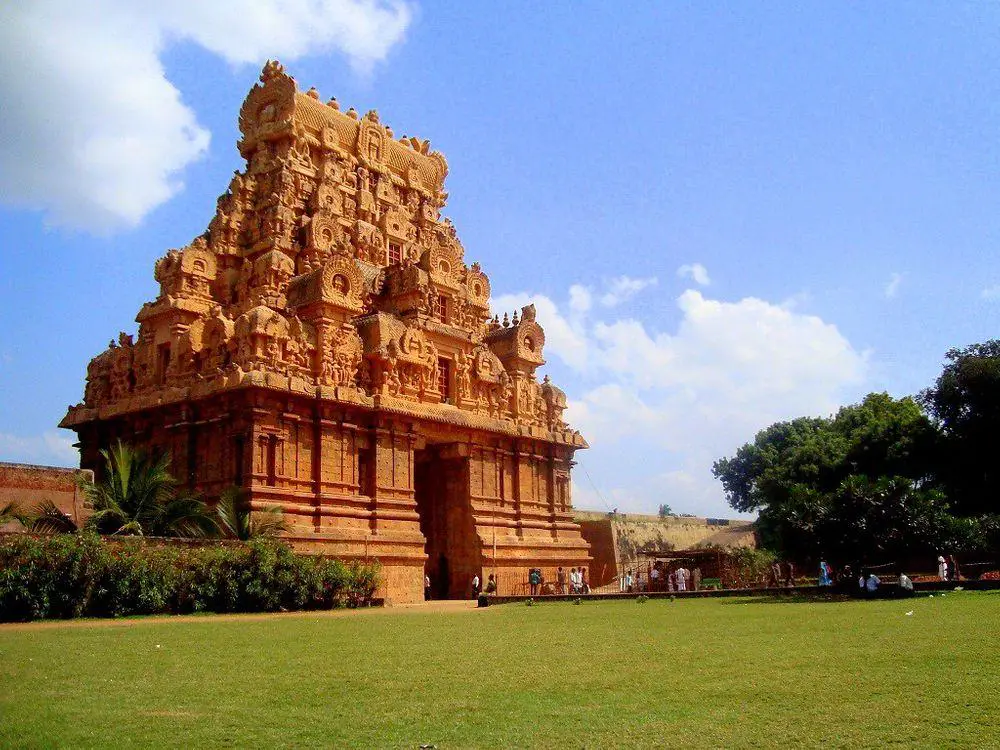
Hindu shrines
Hinduism is one of the oldest religions – possibly the oldest one among contemporary religions and Hindu temples belong to the most impressive religious buildings in the world.
 Recommended books
Recommended books
India Unveiled: Spirit, Tradition, People
This is the one book you need to understand the spirit of India. Internationally acclaimed as the best book of its type on India, this sixth expanded, revised edition of the multi-award-winning book India Unveiled: Spirit, Tradition, People by Robert Arnett truly reveals the diversity and sacredness of the oldest continuously living civilization on earth.
India: A Sacred Geography
A spiritual history of the world’s most religiously complex and diverse society, from one of Harvard’s most respected scholars.

